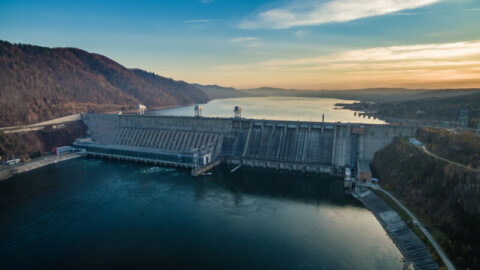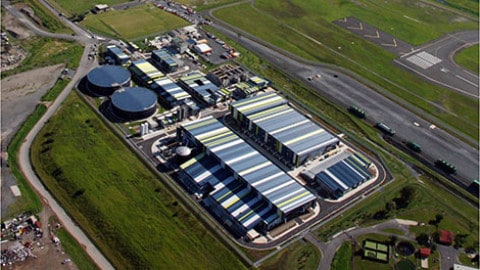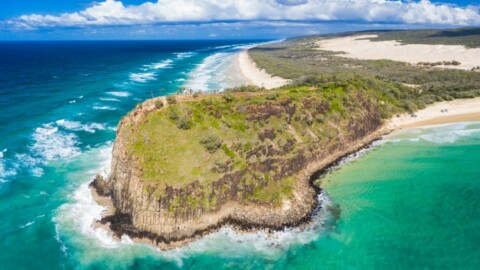Billy Lights Point has been selected as a preferred location for a desalination plant in the Eyre Peninsula area of South Australia, which will provide clean drinking water for around 35,000 SA Water customers in the region.
The decision follows a comprehensive analysis of 20 sites around Port Lincoln and Lower Eyre Peninsula, as well as ongoing consultation with local stakeholders.
The plant will provide a new reliable, climate-independent source of drinking water to supplement existing groundwater sources and the River Murray, and is critical to maintaining a long-term supply of safe and clean drinking water in the area, as well as enabling economic growth.
Earlier processes had identified a location for the facility at Sleaford Bay, but further site investigations of the land and preliminary engineering designs found serious constructability and operational challenges associated with the geological and marine conditions of the area.
Now the preferred site for the Eyre Peninsula desalination plant is identified, SA Water will progress detailed design assessments and hydrodynamic modelling to determine the exact location and length of the intake (where the plant draws seawater in) and outfall (where the plant disperses saline concentrate from the desalination process) pipes.
The plant will draw a total of up to 11.3GL of water from the ocean each year, which is around 0.64 per cent of the volume of Boston and Proper Bay.
SA Water General Manager of Sustainable Infrastructure, Amanda Lewry, said Billy Lights Point will enable a more effective delivery, while also maintaining the existing quality of the local marine and land environments.
“With the support of independent experts, we looked at a range of criteria as part of the site review process, with environmental impacts given the highest weighting,” Ms Lewry said.
“Billy Lights Point best satisfies this criteria, providing reduced technical and environmental challenges; proximity to existing water and electricity networks; a larger available footprint to provide a buffer from residential areas; water quality improvements to Port Lincoln; and best value for money for our customers.
“During consultation with various industries on the Eyre Peninsula, aquaculture representatives in particular, made clear the importance of mitigating the impacts of a plant at this location, on nearby Boston and Proper Bay.
“There is existing scientific data about the bays, and the monitoring and analysis we complete through the development and approval processes will build upon this.
“Additionally, in response to some of the insights received from the aquaculture industry, and in conjunction with the South Australian Research and Development Institute, we are conducting a $30,000 research program on the movement of particles within the bays, which will benefit both the industry and the new desalination plant.
“Regulators responsible for approval will also establish key conditions that we must meet before approval, and during construction and operation.
“Our experience in operating seawater desalination plants – and the experience of other utilities around Australia and the rest of the world – confirms they can be designed and operated to ensure they maintain the health of the marine environment.”
Ms Lewry also explained that the scientific monitoring of the 48GL capacity desalination plant at Cockburn Sound in Western Australia, as an example, shows that since production began in 2006, the facility continues to operate in compliance with all relevant environmental requirements, with no adverse trends and data observed.
Preliminary independent oceanographic modelling shows saline concentrate from the plant – one of the by-products of the desalination process – will be adequately dispersed using a series of specialised diffusers, assisted by a flushing rate in the bays many times greater than what the plant will discharge.
“These factors mean it will be more than suitable for marine life to thrive in the area,” Ms Lewry said.
“Engagement with both industry and the wider Eyre Peninsula community has been key to this project to date, with stakeholders contributing to the site review process in particular through dedicated industry reference group meetings and workshops, regular meetings with individual industry members, and ongoing marine monitoring with industry input.
“We will continue these conversations throughout the detailed planning and construction phases, with community information sessions planned to take place in coming weeks.”
The plant will initially be designed to a 4GL per year capacity, with marine and underground pipework designed to provide for an additional 4GL per year, should it be required to support future drinking water demand.
The parcel of land at Billy Lights Point earmarked for the desalination plant is within the Lukin Corporation’s wider landholdings and development – owned by Dean Lukin Jr – with an option agreement reached with the landholder pending required development and environmental approvals.
“I am really excited by the prospect of this development being undertaken in Port Lincoln, and I trust it will lead to jobs and opportunities for our great community,” Mr Lukin said.
Subject to required approvals, construction of the new desalination plant and supporting infrastructure is expected to begin mid 2022, with first water to be delivered by the end of 2023.


















